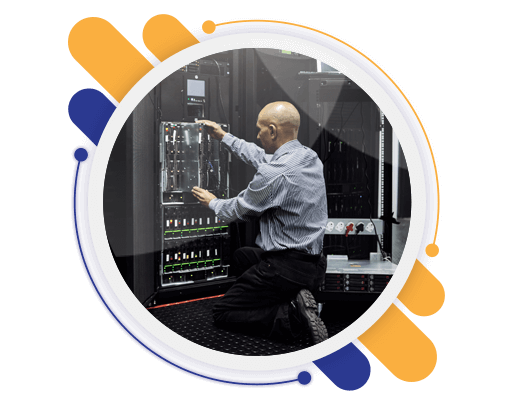Task Statement 1: Determine high-performing and/or scalable storage solutions.
Knowledge of:
- Hybrid storage solutions to meet business requirements
- Storage services with appropriate use cases (for example, Amazon S3, Amazon Elastic File System [Amazon EFS], Amazon Elastic Block Store [Amazon EBS])
- Storage types with associated characteristics (for example, object, file, block) Skills in:
- Determining storage services and configurations that meet performance demands
- Determining storage services that can scale to accommodate future needs
Task Statement 2: Design high-performing and elastic compute solutions.
Knowledge of:
- AWS compute services with appropriate use cases (for example, AWS Batch, Amazon EMR, Fargate)
- Distributed computing concepts supported by AWS global infrastructure and edge services
- Queuing and messaging concepts (for example, publish/subscribe)
- Scalability capabilities with appropriate use cases (for example, Amazon EC2 Auto Scaling, AWS Auto Scaling)
- Serverless technologies and patterns (for example, Lambda, Fargate)
- The orchestration of containers (for example, Amazon ECS, Amazon EKS) Skills in: Decoupling workloads so that components can scale independently
- Identifying metrics and conditions to perform scaling actions
- Selecting the appropriate compute options and features (for example, EC2 instance types) to meet business requirements
- Selecting the appropriate resource type and size (for example, the amount of Lambda memory) to meet business requirements
Task Statement 3: Determine high-performing database solutions.
Knowledge of:
- AWS global infrastructure (for example, Availability Zones, AWS Regions)
- Caching strategies and services (for example, Amazon ElastiCache)
- Data access patterns (for example, read-intensive compared with write-intensive)
- Database capacity planning (for example, capacity units, instance types, Provisioned IOPS)
- Database connections and proxies
- Database engines with appropriate use cases (for example, heterogeneous migrations, homogeneous migrations)
- Database replication (for example, read replicas)
- Database types and services (for example, serverless, relational compared with non-relational, in- memory)
Skills in:
- Configuring read replicas to meet business requirements
- Designing database architectures
- Determining an appropriate database engine (for example, MySQL compared with PostgreSQL)
- Determining an appropriate database type (for example, Amazon Aurora, Amazon DynamoDB)
- Integrating caching to meet business requirements
Task Statement 4: Determine high-performing and/or scalable network architectures. Knowledge of: • Edge networking services with appropriate use cases (for example, Amazon CloudFront, AWS Global Accelerator)
- How to design network architecture (for example, subnet tiers, routing, IP addressing)
- Load balancing concepts (for example, Application Load Balancer)
- Network connection options (for example, AWS VPN, Direct Connect, AWS PrivateLink) Skills in:
- Creating a network topology for various architectures (for example, global, hybrid, multi-tier)
- Determining network configurations that can scale to accommodate future needs Determining the appropriate placement of resources to meet business requirements
- Selecting the appropriate load balancing strategy
Task Statement 5: Determine high-performing data ingestion and transformation solutions.
Knowledge of:
- Data analytics and visualization services with appropriate use cases (for example, Amazon Athena, AWS Lake Formation, Amazon Quick Sight)
- Data ingestion patterns (for example, frequency)
- Data transfer services with appropriate use cases (for example, AWS Data Sync, AWS Storage Gateway)
- Data transformation services with appropriate use cases (for example, AWS Glue)
- Secure access to ingestion access points
- Sizes and speeds needed to meet business requirements
- Streaming data services with appropriate use cases (for example, Amazon Kinesis) Skills in:
- Building and securing data lakes
- Designing data streaming architectures
- Designing data transfer solutions
- Implementing visualization strategies
- Selecting appropriate compute options for data processing (for example, Amazon EMR)
- Selecting appropriate configurations for ingestion
- Transforming data between formats (for example, .csv to .parquet)
Knowledge of:
- Access options (for example, an S3 bucket with Requester Pays object storage)
- AWS cost management service features (for example, cost allocation tags, multi-account billing)
- AWS cost management tools with appropriate use cases (for example, AWS Cost Explorer, AWS Budgets, AWS Cost and Usage Report)
- AWS storage services with appropriate use cases (for example, Amazon FSx, Amazon EFS, Amazon S3, Amazon EBS)
- Backup strategies
- Block storage options (for example, hard disk drive [HDD] volume types, solid state drive [SSD] volume types)
- Data lifecycles
- Hybrid storage options (for example, DataSync, Transfer Family, Storage Gateway)
- Storage access patterns
- Storage tiering (for example, cold tiering for object storage)
- Storage types with associated characteristics (for example, object, file, block)
Knowledge of:
- AWS cost management service features (for example, cost allocation tags, multi-account billing)
- AWS cost management tools with appropriate use cases (for example, Cost Explorer, AWS Budgets, AWS Cost and Usage Report)
- AWS global infrastructure (for example, Availability Zones, AWS Regions)
- AWS purchasing options (for example, Spot Instances, Reserved Instances, Savings Plans)
- Distributed compute strategies (for example, edge processing)
- Hybrid compute options (for example, AWS Outposts, AWS Snowball Edge)
- Instance types, families, and sizes (for example, memory optimized, compute optimized, virtualization)
- Optimization of compute utilization (for example, containers, serverless computing, microservices)
- Scaling strategies (for example, auto scaling, hibernation)
- Configuring appropriate NAT gateway types for a network (for example, a single shared NAT gateway compared with NAT gateways for each Availability Zone)
- Configuring appropriate network connections (for example, Direct Connect compared with VPN compared with internet)
- Configuring appropriate network routes to minimize network transfer costs (for example, Region to Region, Availability Zone to Availability Zone, private to public, Global Accelerator, VPC endpoints)
- Determining strategic needs for content delivery networks (CDNs) and edge caching
- Reviewing existing workloads for network optimizations
- Selecting an appropriate throttling strategy
- Selecting the appropriate bandwidth allocation for a network device (for example, a single VPN compared with multiple VPNs, Direct Connect speed)







